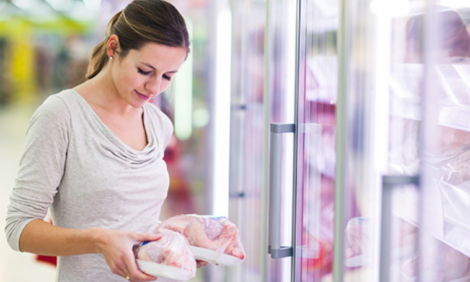



EU sees some consumer hoarding of food, but producers, retailers keeping up with demand
The US Department of Agriculture (USDA) this week reported that with the onset of the COVID-19 pandemic, it is difficult to generalise consumer behavior and market developments across all 27 EU member states.Nevertheless, patterns are emerging. In the first few two weeks of widespread quarantine, many grocery retail outlets reported a surge in demand and some hoarding of shelf-stable foods, canned goods and pantry staples. Despite logistical challenges along the food supply chain, farmers, transporters, and grocery retailers have been largely successful in keeping the shelves stocked and stores open.
Prior to the pandemic, EU policy makers were set to shake up government funding and policy goals for agriculture. Tense debates about reducing the EU agriculture budget and increasing regulatory stringency for farmers under the European Commission’s Green Deal are now on hold for now as a result of the crisis.
Over the past several weeks in response to the spread of COVID-19, Member States (MS) of the EU closed borders to non-essential travel while rapidly re-establishing quasi-national borders within the Schengen Area. Due to rumors of potential food shortages and the fear of grocery store shelves going bare, consumers raced to stock up. USDA reported that compared to the same period a year ago, grocery and convenience store sales in Belgium and France increased 37 and 30 percent, respectively, during 16-23 March. Looking ahead, price volatility remains a concern, but policy makers are focused on solving immediate issues affecting upcoming harvests and the distribution of goods.
Although grocery retail shelves remain mostly stocked, EU food and farming organizations were quick to sound the alarm that COVID-19 movement restrictions would pose major challenges to the single market and distribution of food across the EU. The EU fresh produce industry organization, FRESHFEL, alerted officials to the need to secure seasonal workers and their ability to “move to places where there is a need.”
The retail sector is also concerned about movement restrictions and a workforce stretched thin by the crisis. Processing, transport and agri-food retail laborers contend with burnout, reduced public transport schedules, challenges securing childcare under quarantine, and likely increased exposure to COVID-19. The Belgian trade organization representing food and beverage producers FEVIA, reported from a survey of its members that 60 percent of food companies are experiencing increased absenteeism and reduced staffing is having an impact on production at 39 percent of FEVIA members’ operations. FEVIA indicated food shortages are not likely, but that workers are under tremendous strain.
The near complete shuttering of fast food chains left French and Irish beef farmers with far fewer buyers. The recent market access success for an exclusive trade quota of US high quality beef (HQB) also has fallen victim to disappearing demand. The US HQB first quarter quota of about 5,000 metric tons was almost filled by March 31 but will likely go unfilled in the second quarter as importers scramble to sell existing stocks to a beleaguered restaurant industry.
With the financial shocks of the pandemic continuing to unfold and the normal lags in intra- and extra-EU trade data reporting, industry is mobilizing to capture impacts to affected food and agricultural sectors and advocate for relief. EU policy makers are weighing options. Responses floated to or by policy makers are: extending the current CAP and associated funding levels; undertaking exceptional measures, including those for affected sectors that are outside of the CAP scope, e.g., the hard-hit nursery and flower sector; and tapping the Common Market Organization Regulation for loss interventions and storage aid. Given disruptions in export markets and intra-EU trade - as well as other pre-existing market forces beleaguering some EU farm sectors - there are calls for public financing for private storage to deal with supply gluts of wine, olive oil, sugar, beef and dairy. Unless EU Heads of State approve additional funding via measures such as the much-debated “Corona Bonds,” COVID financial agri-aid comes via re-programming funds and loosening eligibility requirements. On April 2, the Commission announced measures to provide advances some EU farmers receive through the CAP, increasing direct payment advances from 50 percent to 70 percent. EU Commissioner of Agriculture and Rural Development Janusz Wojciechowski also announced that MS could re-purpose outstanding funding from each Member State’s Rural Development (RD) CAP budget to provide support to the farming sector and other areas affected by COVID-19. The Commission estimated this funding could be between $6-17 billion, depending on whether Member States have already committed the RD funding. Another issue is that the RD money is earmarked for poorer regions, which may not be the same regions most affected by the COVID-19 crisis.
The COVID-19 pandemic has reminded policy makers and the public of the primacy and vitalness of EU farmers, truckers, and food workers. This appreciation may re-shape the terms of the debate for both the ongoing EU budget negotiations and the Commission’s COVID-19 responses, as well as the timing of and new requirements for farmers in the Commission’s forthcoming Farm to Fork Strategy. With the possibility of some produce disruptions, USDA expectst agri-food supply chains to continue to perform well in the coming weeks.









